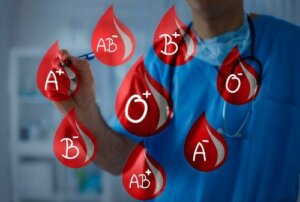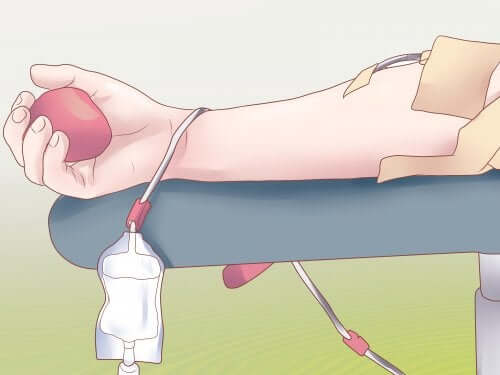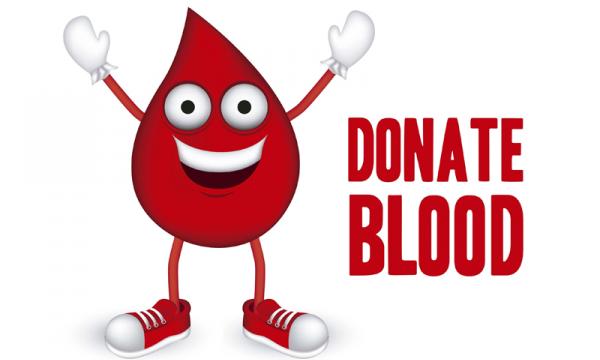Blood Types: Donate and Receive Blood

It’s essential to know our blood type, also called blood group. There are 4 main blood types: A, B, 0, and AB0, which are determined by the presence or absence of certain proteins on the surface of red blood cells, a blood cell. Knowing our blood group is important so we know who we can donate blood to, and who we can receive it from.
In addition, each person also has a blood type based on Rh positive or Rh negative, depending on the presence or absence of another antigen or protein in the red blood cells.
As we’ve said, it’s very important that you know your blood type if you want to donate, for example. Also, if you’re in an emergency situation and need a transfusion, you’ll need to know your blood group so that they can give you the same type of blood.
Donate and receive blood
Next, we’ll look more closely at the different characteristics of the different types of blood.
A positive (A+)
Group A positive is one of the most common blood types. 1 in 3 people is A+; or, in other figures, 35.7% of the population.
People who are A-positive can donate blood both to their own blood group and to people who are AB-positive. This is because they share the same type of proteins, so the body won’t attack the new cells, as it recognizes them as its own.
In the event of a transfusion, people with A+ can receive blood from groups A and 0. Donors of this type of blood are encouraged to donate whole blood and platelets.
A negative (A-)
In this case, the percentage of A-negative people is reduced to 6.3%, that is, 1 out of every 16 people in the population shares this blood group.
They can donate blood to people who belong to the following blood groups:
- A-
- A+
- AB+
- AB-
However, they can only receive blood from people with A- or 0-. Donors in this group are encouraged to donate whole blood and double red cells.
Also read: World Blood Donor Day Helps Save Lives
B positive (B+)

8.5% of the population, or 1 out of every 12 people has type B+. Type B+ donors can donate to people with type B+ and AB+. In this sense, this population group can receive blood from either type B or type 0.
Type B+ blood donors can make the greatest impact with both whole blood and double red cell donations.
B negative (B-)
These blood types are just getting rarer. 1 in 67 have this type of blood, that is, 1.5% of the general population.
B-negative people can donate blood to people with type B-positive, B-negative, AB-positive, and AB-negative blood. As with the previous group, they can only receive blood from people with the same blood type or from 0-.
As far as advice on donating, we suggest people who are B-positive to donate whole blood or platelets.
0 positive (0+)
Even more popular than A+, we present positive 0. It’s the most common blood type and represents 37.4% of the population.
People with 0+ can donate blood to all positive blood types. However, they can only receive blood from other 0+ or 0-. Donors with this type of blood are encouraged to donate double red cells and whole blood.
0 negative (0-)

The percentage of people with 0- represents 6.6% of the population, which is the same as saying that 1 in every 15 people are 0-.
Although they can donate to anyone, they can only receive blood from people of the same blood type, 0-. Specialists recommend they donate double red cells and whole blood.
AB positive (AB+)
AB+ is the rarest blood type, with only 1 in 29 people, which translates to 3.4% of the global population.
Unlike 0-, AB+ donors can only donate to other AB+ recipients, but can receive any type of blood, making it the universal blood recipient.
AB negative (AB-)
This group is the rarest of all blood types. Only 0.6% of the population has it. The blood type AB- can donate to AB- and AB+ and can receive from all negative blood types.
AB- donors are encouraged to donate platelets and plasma.
All cited sources were thoroughly reviewed by our team to ensure their quality, reliability, currency, and validity. The bibliography of this article was considered reliable and of academic or scientific accuracy.
- Crf-am, R. T. S., Itannan, R., & Negro, A. R. (2010). Hemograma completo. Nursing.
- Suarez, A. (2017). Grupos Sanguíneos. Catedra de Fisiologia I.
- Montalvo Arenas, C. E. (2010). Tejido Sanguineo. Universidad Nacional Autonoma de México.
This text is provided for informational purposes only and does not replace consultation with a professional. If in doubt, consult your specialist.








